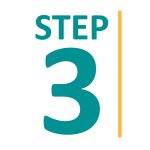Combination Product Industry News & Guidance
Sharing device-related information and wisdom
that will help you succeed
Case Study: Device Platforms & Small Pharma
“The Knowledge Gap”

In this case study, we observe a small pharma company that needed to execute a combination product development program. Upper management was in full support of providing resources to get the job done right, but they didn’t have the experience and knowledge to give effective direction to their teams. This is typical in small pharma, where you are just starting out in the combination product space…you are trying to engage in this new space but are not even sure where to start.

One of the reasons for this uncertainty is that pharmaceutical discovery is process-focused, while the device side is development-focused. A drug is first ”discovered”, and then the team writes up all of the requirements and specifications that were exposed during the discovery process. A device, in contrast, is the result of first defining user needs and requirements. Only then does the team create the product design based on these requirements. When pharma companies approach the device side using a discovery approach, the device will be developed with many requirements and necessary documentation that are left out of the process. This leads to regulatory submission failure, or at best, a hot, scrambling mess trying to gather the deliverables needed to get an approval.
Another issue is the fact that this is a complex market. Yes, you can read the Design Control Guidance by the FDA. But that will not have all of the answers or give you all of the background you need to make decisions, set your pathway, and get FDA approval for your combination product. That guidance was written in 1999! There are so many sources with guidance information, and these sources are updated consistently. It is very difficult to absorb the entire picture and stay current. This is especially so for teams that are new to, or infrequent visitors to, the combination product space. This is especially important for executives to understand, as they lead the company’s efforts into this space.
New combination product teams need to give yourselves the breadth to say “there is a lot going on” and the understanding to recognize you are the pharma experts and this is a brand new space.
The first step toward success is knowing what you don’t know (both the known-unknowns and the unknown-unknowns) and seeking out those answers. The small pharma company in this case study was on the right track when they came to Suttons Creek asking for a hand.
Upon examination, it was noted that the development team was not staffed properly to handle a combination product, and the people on the team did not understand how to set up an efficient process that would lead to regulatory approval. This lack of information stymied decisions, communication, and the development process throughout the organization.
With this client, we needed to get down to basics – grow their knowledge base, get them addressing the right questions and concerns, and create a structure and process that built upon their existing drug systems.
 Our first step was educating their management and execution teams on the commonalities and the many differences between the drug and device regulation processes. The complexities of combination product development and approval are ever-changing due to advancements in science, technology and client-care innovation. Getting their team current on the regulations that applied to their combination product was also a key component of discussions.
Our first step was educating their management and execution teams on the commonalities and the many differences between the drug and device regulation processes. The complexities of combination product development and approval are ever-changing due to advancements in science, technology and client-care innovation. Getting their team current on the regulations that applied to their combination product was also a key component of discussions.
 After they had a basis for defining their regulatory pathway, we dissected the complete combination product development process. With a detailed view of the required development stages that a device constituent part adds to the process, our consultants were able to assess current systems and create new ones that seamlessly integrated the device into the existing drug process. We began by looking at their portfolio BEFORE beginning anything, to understand each drug’s device requirements. This gave their executive team direction and allowed for maximum efficiency with container selection.
After they had a basis for defining their regulatory pathway, we dissected the complete combination product development process. With a detailed view of the required development stages that a device constituent part adds to the process, our consultants were able to assess current systems and create new ones that seamlessly integrated the device into the existing drug process. We began by looking at their portfolio BEFORE beginning anything, to understand each drug’s device requirements. This gave their executive team direction and allowed for maximum efficiency with container selection.
 We then bolted-on a device quality management system on top their CMC quality system for a streamlined, adaptable approach. There is an excessive list of deliverables for devices that need to support your regular submissions. Pharma has to own this – this cannot be a vendor’s task. To protect your own company and ensure compliance, it is up to the pharma company to obtain the knowledge on what deliverables are required and where/how to gather them for the submission process…then manage its vendors accordingly. You can’t assume your vendor can or will do it without oversight.
We then bolted-on a device quality management system on top their CMC quality system for a streamlined, adaptable approach. There is an excessive list of deliverables for devices that need to support your regular submissions. Pharma has to own this – this cannot be a vendor’s task. To protect your own company and ensure compliance, it is up to the pharma company to obtain the knowledge on what deliverables are required and where/how to gather them for the submission process…then manage its vendors accordingly. You can’t assume your vendor can or will do it without oversight.
NOTE: Many times, small pharma buys a platform from a vendor and thinks all of the work is done. The executives don’t realize that even when you buy a platform, there are still a huge number of deliverables that are required to comply with FDA regulations – it’s not done by the vendor. And, even if the vendor has done its own testing and provided documentation to demonstrate system performance, this does not mean the pharmaceutical company’s regulatory responsibilities are met for this device platform to be approved as part of your combination product.
 Without the above understanding, executives don’t budget time or resources for these activities to be done internally along with their specific drug/biologic deliverables. Suttons Creek helped this small pharma company budget, strategize and create processes to account for this. We ensured they had vendor quality control systems in place and that they were even aware of those issues that don’t always, but can, arise (e.g., major suppliers make unanticipated manufacturing location moves and pharma doesn’t have the quality agreements in place to be in compliance).
Without the above understanding, executives don’t budget time or resources for these activities to be done internally along with their specific drug/biologic deliverables. Suttons Creek helped this small pharma company budget, strategize and create processes to account for this. We ensured they had vendor quality control systems in place and that they were even aware of those issues that don’t always, but can, arise (e.g., major suppliers make unanticipated manufacturing location moves and pharma doesn’t have the quality agreements in place to be in compliance).

We also set up standardized platforms of documentation and execution to use across all projects utilizing the selected device platform. This platforming process creates consistency and efficiency, increases control, decreases risk, and allows for substantiated improvements through iteration.
 Once an insightful and efficient strategy plan and development process were set, a hand-picked team of specialized Suttons Creek consultants integrated into the CMC teams to bridge the gaps we found in their staffing. This became a faster and less costly solution to bringing on internal staff. The result was getting their program running immediately, without any need to train or update new hires.
Once an insightful and efficient strategy plan and development process were set, a hand-picked team of specialized Suttons Creek consultants integrated into the CMC teams to bridge the gaps we found in their staffing. This became a faster and less costly solution to bringing on internal staff. The result was getting their program running immediately, without any need to train or update new hires.
Bringing Suttons Creek on at the beginning of the project allowed this client to align their decisions, people and systems in an informed manner. In the end, they had an inception through lifecycle execution that saved them time and money – and brought a life-changing drug to patients sooner. The training they received in the process set the company up with self-sustaining internal resources and processes for future combination product projects.
Steve Badelt, PhD – Steve is a seasoned expert with over 20 years of experience in combination products, engineering management, systems engineering, and business development. He founded consulting firm Suttons Creek, Inc. in 2012, which has served as the device team for pharma on over 50 combination product programs. Steve values helping others learn and grow, and when he is not consulting on behalf of Suttons Creek, he is advising startups, sitting on industry boards, speaking nationally on combination product and connectivity issues and serving as a Graduate Professor at Loyola Marymount University.
